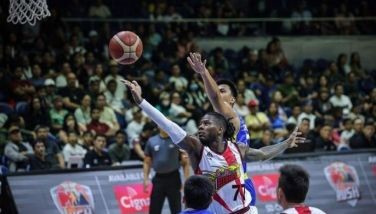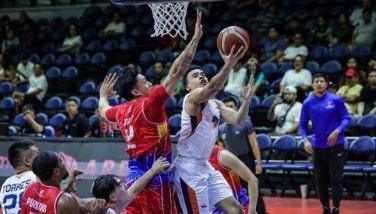The trouble with women’s basketball
Another record-setting PBA season has just ended, and another college basketball season has begun. These games continue to draw high television ratings and growing revenues from more and more advertisers. But for the most part, women’s basketball is still leagues away from becoming a staple in sports media. If one were to measure and account how much women’s basketball appears in local papers, it would probably account for less than five percent of the press men’s basketball gets. There are many arguments. Some say girls aren’t as athletic as men, or aren’t as dramatic. You won’t see high-flying dunks in a women’s game. Also, there is the caveat that women’s sports is plagued with the same politics that men’s sports is, even if it does not get the same attention.
There have been attempts to create a full-time professional or semi-professional league for women, but they end up fizzling out. Even internationally, this seems to be a dilemma. If you recall, the WNBA was one of two leagues that sprouted for women who represented their countries in the 1996 Atlanta Olympics. It now stands alone, and only runs during the NBA’s offseason. The players often seek part-time employment as imports in other leagues in Europe and Japan. There seems to be no permanent solution to the problem.
Fortunately, a group of former Philippine national women’s team members are trying to address this by getting to the root cause of this situation.
“We noticed that almost all of the basketball camps in the country are run by men,” explains Ewon Arayi, a long-time forward for the national team. “Girls are intimidated by male coaches, especially in the provinces where father figures are sometimes very strict and maybe shout at them. But when the teachers are female, both boys and girls join the camps.”
Arayi founded the Hoop Heroes, formerly known as the Philippine Lady Commandoes, to rectify this problem. The Hoop Heroes are all former women’s national athletes who have made it their mission to conduct free basketball clinics for children nationwide. The Hoop Heroes solicit the support of local governments and sponsors, who pay for their travel, food, accommodations and allowances, so they won’t have to charge for their one-day and two-day clinics. The Hoop Heroes even play exhibition games, so far always winning against men. This sends a strong signal to young girls.
“There was this old belief that women are just meant for the kitchen, or to have children,” adds Arayi, a native of Pangasinan who traveled to Manila on her own to become a leader of the Adamson Lady Falcons in the early 2000s. “We’re trying to show little girls that if we can do it, they can do it, they can do whatever they choose to do.”
The strategy is simple: with more and more training camps that include girls, there will be a base from which to grow the sport. Little girls who have Hoop Heroes certificates hanging on their bedroom walls will be encouraged to keep playing the sport, alone or with each other, or even with boys. As they get better, basketball then becomes not only a means to improve their confidence, but also a path to a better life. Athletic scholarships, after all, are available to both male and female athletes.
“There are a lot of women who want to play basketball,” affirms AA Adriano, former FEU Lady Tamaraw and current captain of the Philippine handball team. “We end up playing anywhere, even if we have to pay just to play, simply because there is no commercial league for women.”
This was borne out in the Eastern Basketball League, based in Sta. Lucia East Mall. The tournament was organized by frustrated female players, and featured eight strong teams in a very intense and often very physical two-month league. Dozens of former national team players joined, many suiting up for Army and Air Force, which battled in the finals. Each of the players paid to play, even if some couldn’t really afford it, to cover basic expenses. They just wanted to scratch their itch for hoops.
“This is really our hope, that someday there will be a PBA for women,” says Fatima Tolentino, a center for UP before making the Philippine team. “We have the skills, we have the training, we even have the organizational ability. We’re smart enough. We could run a league. And there are so many players out there. You’d be surprised. I mean, it’s basketball.”
And that is the other half of the problem. Even if the Hoop Heroes succeed in planting the seeds for young women to learn and love the sport, where will it all lead? Even in some established collegiate leagues, they even forget that women use a smaller ball for actual tournament play. The good news is that there are local governments and a group of independent event managers who are willing to gamble on the sustainability of a women’s basketball league. Some are taking advantage of the fact that other advertisers are drawn to women’s sports because of the attention received by the UAAP volleyball tournament and the Shakey’s V-League but don’t want to ride on the bandwagon. In a matter of weeks, there will be another brave attempt at a women’s league.
The question now is if the media and other sponsors help them out, or not.
- Latest
- Trending
































